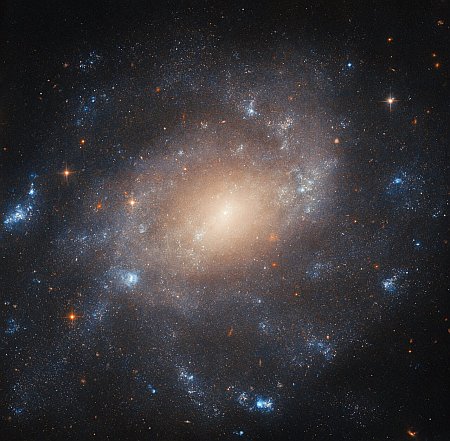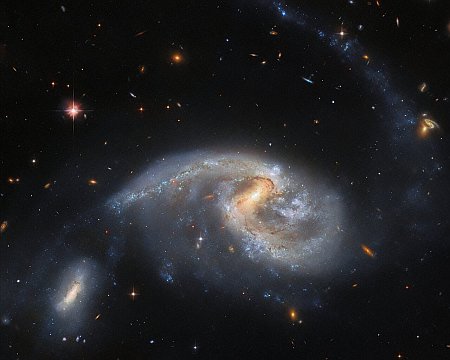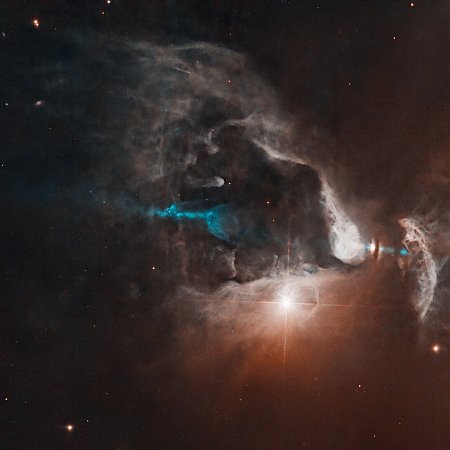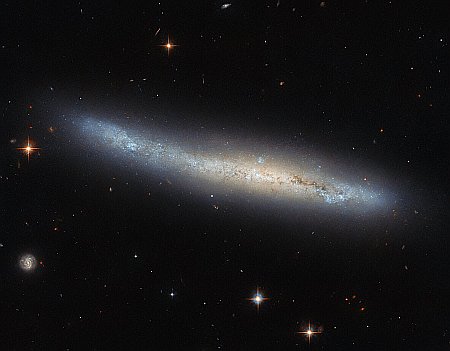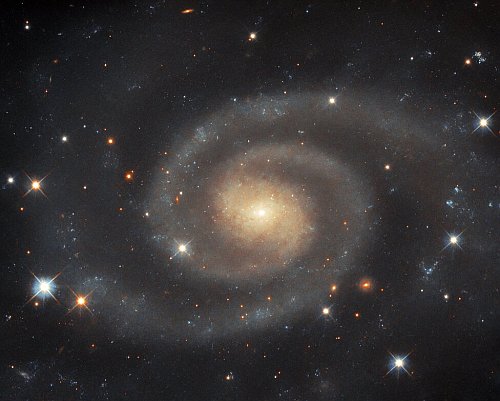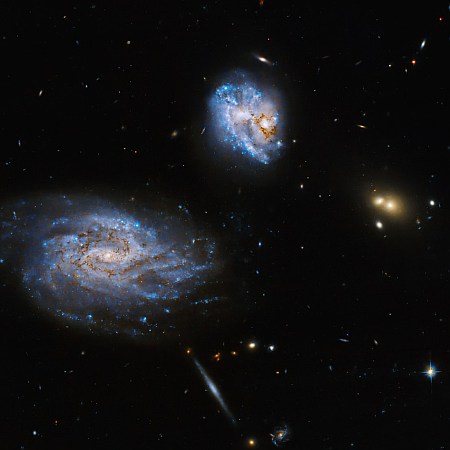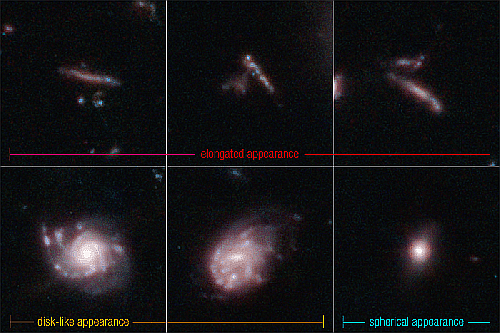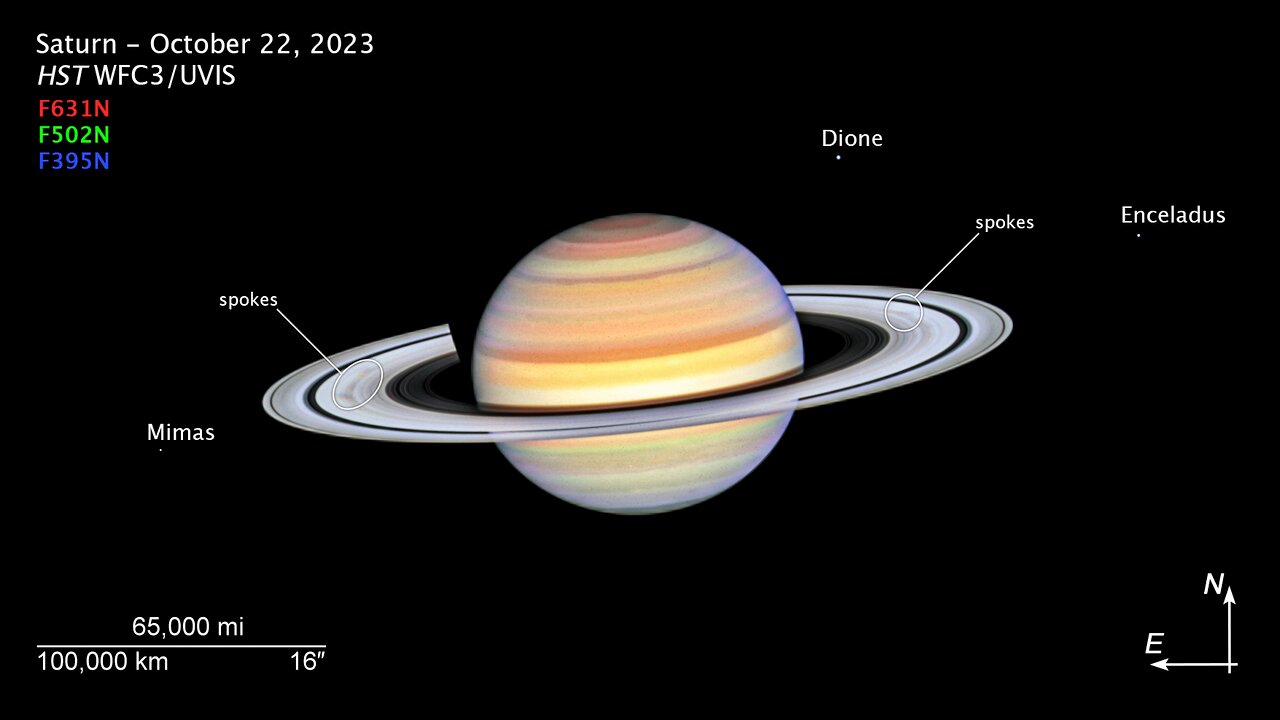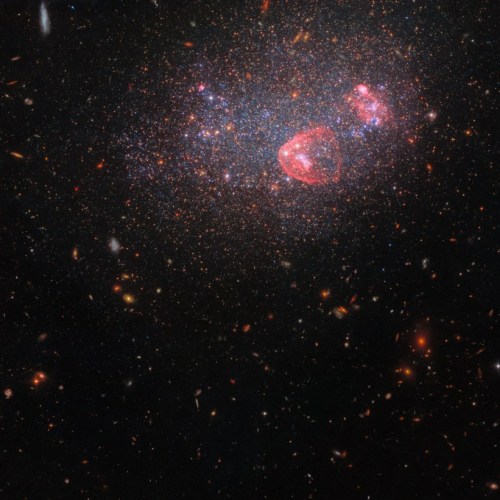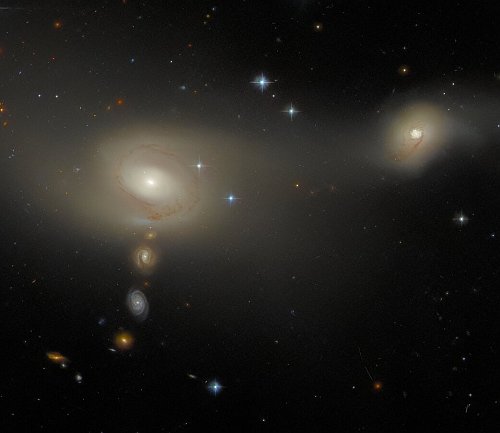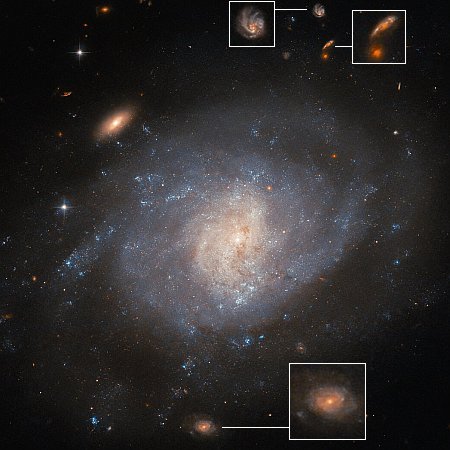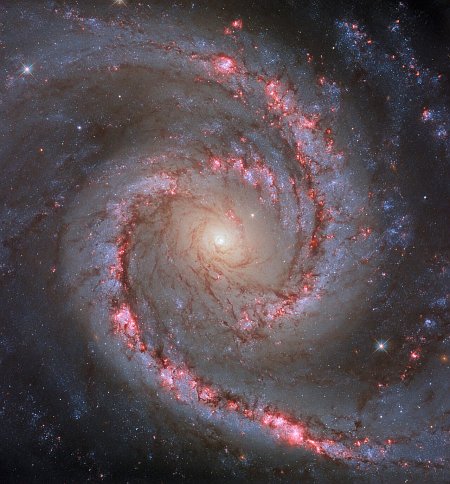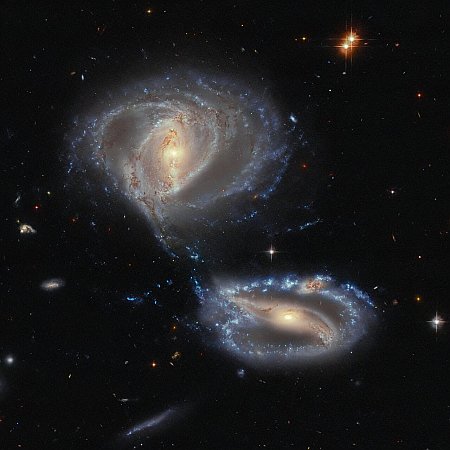A supernova factory
Cool image time! The picture to the right, cropped, reduced, and sharpened to post here, was taken by the Hubble Space Telescope in 2023 as part of a survey of galaxies where recent supernovae have occurred. One occurred in 2020 in this galaxy, which is about 240 million light years away and dubbed UGC 9684.
Remarkably, the 2020 supernova in this galaxy isn’t the only one that’s been seen there — four supernova-like events have been spotted in UGC 9684 since 2006, putting it up there with the most active supernova-producing galaxies. It turns out that UGC 9684 is a quite active star-forming galaxy, calculated as producing one solar mass worth of stars every few years! This level of stellar formation makes UGC 9684 a veritable supernova factory, and a galaxy to watch for astronomers hoping to examine these exceptional events.
This image provides scientists a high resolution baseline should another supernova occur. It will not only make it easier to spot a future supernova, it also increases the chances that the progenitor star that went boom could be identified.
Cool image time! The picture to the right, cropped, reduced, and sharpened to post here, was taken by the Hubble Space Telescope in 2023 as part of a survey of galaxies where recent supernovae have occurred. One occurred in 2020 in this galaxy, which is about 240 million light years away and dubbed UGC 9684.
Remarkably, the 2020 supernova in this galaxy isn’t the only one that’s been seen there — four supernova-like events have been spotted in UGC 9684 since 2006, putting it up there with the most active supernova-producing galaxies. It turns out that UGC 9684 is a quite active star-forming galaxy, calculated as producing one solar mass worth of stars every few years! This level of stellar formation makes UGC 9684 a veritable supernova factory, and a galaxy to watch for astronomers hoping to examine these exceptional events.
This image provides scientists a high resolution baseline should another supernova occur. It will not only make it easier to spot a future supernova, it also increases the chances that the progenitor star that went boom could be identified.




